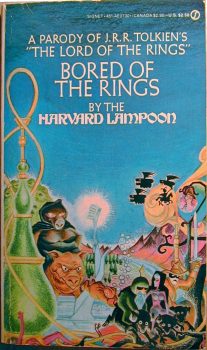Tor Double #18: Robert Silverberg’s In Another Country and C.L. Moore’s Vintage Season

With this volume, the Tor Double series began an experiment and also a format change. Beginning with C.L. Moore’s 1946 story Vintage Season, Tor had Robert Silverberg write a sequel, In Another Country. Depiste the book cover proclaiming it “New!,” the Silverberg piece appeared in Isaac Asimov’s Science Fiction Magazine eleven month prior to its publication in the Tor Double series. In addition, this volume was published in the standard anthology format rather than tête-bêche, perhaps reflecting the two stories’ relationship to each other as original and sequel.
Vintage Season was originally published in Astounding in the September and October 1946 issues and credited to Lawrence O’Donnell. At various times, this story has been credited to C.L. Moore and Henry Kuttner, Lawrence O’Donnell, or to just C.L. Moore. Tor credits Moore alone for the story.








